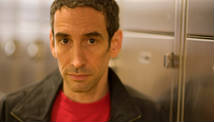SOUTH BEND, Ind. Not once but twice after he supposedly discovered his online girlfriend of three years never even existed, Notre Dame All-American linebacker Manti Te'o perpetuated the heartbreaking story about her death.

Manti Te'o
An Associated Press review of news coverage found that the Heisman Trophy runner-up talked about his doomed love in a Web interview on Dec. 8 and again in a newspaper interview published Dec. 11. He and the university said Wednesday that he learned on Dec. 6 that it was all a hoax, that not only wasn't she dead, she wasn't real.
On Thursday, a day after Te'o's inspiring, playing-through-heartache story was exposed as a bizarre lie, Te'o and Notre Dame faced questions from sports writers and fans about whether he really was duped, as he claimed, or whether he and the university were complicit in the hoax and misled the public, perhaps to improve his chances of winning the Heisman.
Yahoo sports columnist Dan Wetzel said the case has "left everyone wondering whether this was really the case of a naive football player done wrong by friends or a fabrication that has yet to play to its conclusion."
Gregg Doyel, national columnist for CBSSports.com, was more direct.
"Nothing about this story has been comprehensible, or logical, and that extends to what happens next," he wrote. "I cannot comprehend Manti Te'o saying anything that could make me believe he was a victim."
On Wednesday, Te'o and Notre Dame athletic director Jack Swarbrick said the player was drawn into a virtual romance with a woman who used the phony name Lennay Kekua, and was fooled into believing she died of leukemia in September. They said his only contact with the woman was via the Internet and telephone.
Te'o also lost his grandmother — for real — the same day his girlfriend supposedly died, and his role in leading Notre Dame to its best season in decades endeared him to fans and put him at the center of college football's biggest feel-good story of the year.
Relying on information provided by Te'o's family members, the South Bend Tribune reported in October that Te'o and Kekua first met, in person, in 2009, and that the two had also gotten together in Hawaii, where Te'o grew up.
Te'o never mentioned a face-to-face meeting with Kekua in public comments reviewed by the AP. And an AP review of media reports about Te'o since Sept. 13 turned up no instance in which he directly confirmed or denied those stories — until Wednesday.
Among the outstanding questions Thursday: Why didn't Te'o ever clarify the nature of his relationship as the story took on a life of its own?
Te'o's agent, Tom Condon, said the athlete had no plans to make any public statements Thursday in Bradenton, Fla., where he has been training with other NFL hopefuls at the IMG Academy.
Notre Dame said Te'o found out that Kekau was not a real person through a phone call he received at an awards ceremony in Orlando, Fla., on Dec. 6. He told Notre Dame coaches about the situation on Dec. 26.

Manti Te'o's girlfriend hoax: How did it happen?
The AP's media review turned up two instances during that gap when the football star mentioned Kekua in public.
Te'o was in New York for the Heisman presentation on Dec. 8 and, during an interview before the ceremony that ran on the WSBT.com, the website for a South Bend TV station, Te'o said: "I mean, I don't like cancer at all. I lost both my grandparents and my girlfriend to cancer. So I've really tried to go to children's hospitals and see, you know, children."
In a story that ran in the Daily Press of Newport News, Va., on Dec. 11, Te'o recounted why he played a few days after he found out Kekau died in September, and the day she was supposedly buried.
"She made me promise, when it happened, that I would stay and play," he said.
On Wednesday, Swarbrick said Notre Dame did not go public with its findings sooner because it expected the Te'o family to come forward first. But Deadspin.com broke the story Wednesday.
Reporters were turned away Thursday at the main gate of IMG's sprawling, secure complex. Te'o remained on the grounds, said a person familiar with situation who spoke on condition of anonymity because neither Te'o nor IMG authorized the release of the information.
"This whole thing is so nutsy that I believe it only could have happened at Notre Dame, where mythology trumps common sense on a daily basis. ... Given the choice between reality and fiction, Notre Dame always will choose fiction," sports writer Rick Telander said in the Chicago Sun-Times.
"Which brings me to what I believe is the real reason Te'o and apparently his father, at least went along with this scheme: the Heisman Trophy.
Chicago Tribune columnist John Kass blasted both Te'o and Notre Dame.
"When your girlfriend dying of leukemia after suffering a car crash tells you she loves you, even if it might help you win the Heisman Trophy, you check it out," he said.
He said the university's failure to call a news conference and go public sooner means "Notre Dame is complicit in the lie."
"The school fell in love with the Te'o girlfriend myth," he wrote.














